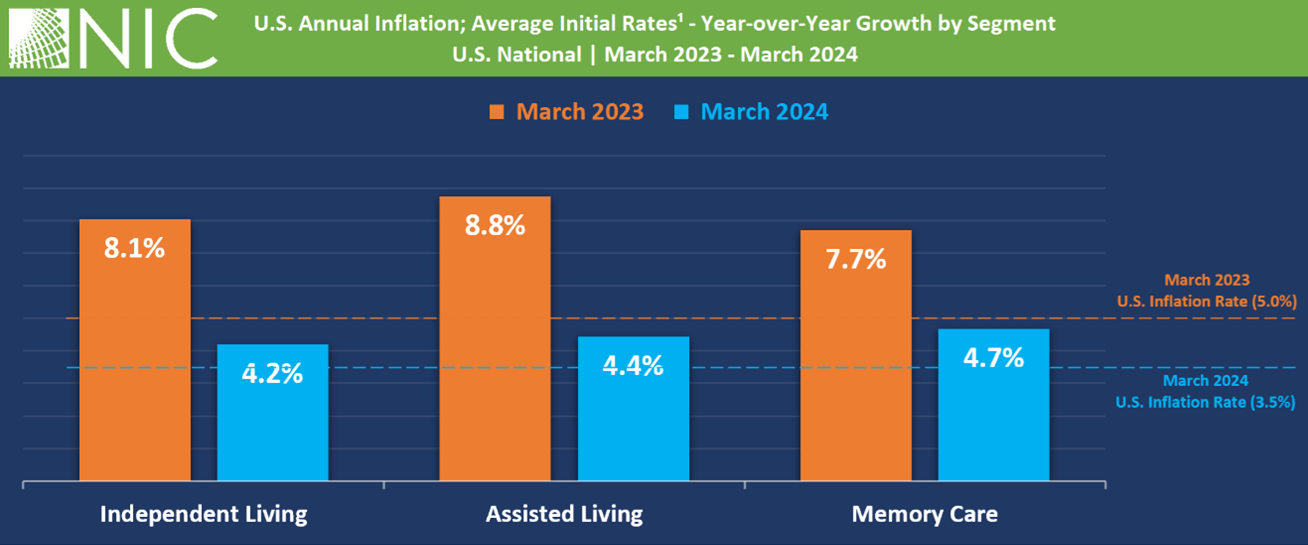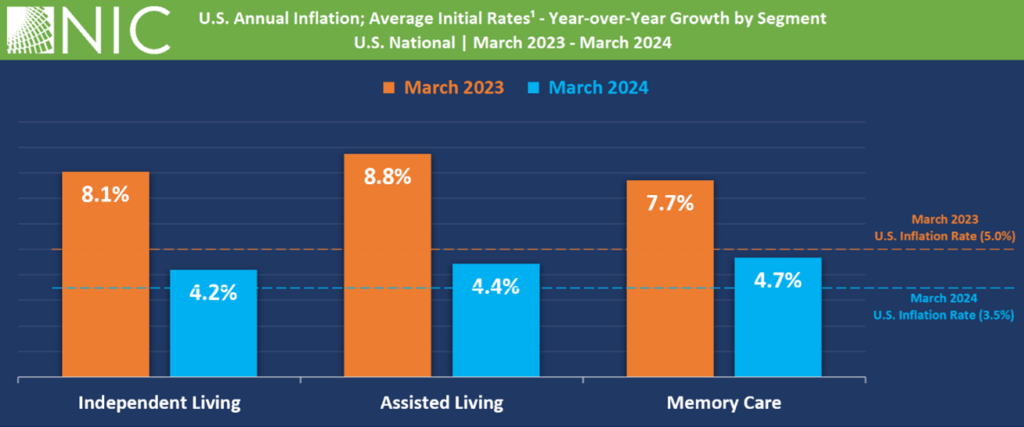Expert Insights from Outside Industries
More older adults are living in senior housing today than ever before, with the number of senior housing communities outnumbering McDonalds restaurants in the U.S. by 20%. And in the next four years, the over-80 population will increase at a rate 16x higher than recent senior housing inventory growth.

With these and many more compelling data points on the state of the industry, Justin Hutchens, Executive Vice President, Senior Housing at Ventas, and Chair of the 2024 Data & Analytics Conference Program Committee, aptly kicked off an exciting two days in Minneapolis where conference attendees learned and shared the latest data uses and insights that can help move the industry forward.
“Complexity can get in the way of transparency,” Hutchens noted, sharing that the operational complexities inherent in senior housing have contributed to the lack of transparency and data availability for the sector compared to the multifamily and hospitality sectors. But he believes that can change as the “relatively small” sector (compared to other real estate property types) works together.
The 2024 NIC Data & Analytics Conference provided an opportunity for both analysts and executives to strategize on how to use data and analytics to drive resident and staff engagement, and ultimately business success. Informative sessions and formal and informal networking opportunities provided the perfect setting for knowledge-sharing.
AI is the Future, and the Future is Now
The topic of AI was a thread running through many of the conference sessions. Arick Morton, CEO, NIC MAP Vision, discussed ways AI can dramatically upscale the industry by helping operators make use of their vast amounts of data without having to budget for staffs of data analysts, noting that in the sector “There’s a ton of data. Part of the challenge is leveraging that data.”
Justin Grammens, Founder & CEO, Recursive Awesome, Lab 651 & Applied AI, discussed the productivity gains that can be realized today just by utilizing ChatGPT, citing use cases for content creation, sales and marketing analyses, employee onboarding, and even help desk support. He offered examples where AI can be used by different stakeholders in senior housing and care:
- Residents and owners – Predictive healthcare, wearables, and products to counteract depression.
- Owners and investors – Smart buildings, marketing automation, workflow automation.
- More: Self-driving cars, augmented reality/virtual reality to combat resident isolation.
HumanGood CTO, Nick Lindberg, described HumanGood’s use of AI for administrative purposes and the productivity gains they’ve experienced as “a lot of little wins start to add up.”
If you’re wondering where to begin with adopting AI in your business, Grammens advises businesses to get started with just one thing, “Find the low hanging fruit with minimal risk.” Lindberg suggests encouraging adoption by starting with examples, show people what it can do.

Learning From Outside Perspectives
During the eight interactive sessions, experts dug into topics covering the latest research and data-driven insights paving the way for strategic growth. One of the goals of this year’s event was to learn from experts from adjacent and related sectors. Voices from outside of the senior housing and care industry were well represented on session panels, offering perspectives on how GE, Humana, CoStar, Revenue Analytics, United Optum, Walmart, and other companies have used analytics to power their business models and drive customization of the staff and client experience.
In one executive breakout session, Humana’s Levi Bailey, VP, Enterprise Data Platform & Integration, discussed Humana’s focus on value-based care, with data as a key enabler for measuring outcomes and ultimately managing rising costs in the healthcare system. “The more we can do to detect and prevent things from happening to our members, it has a massive effect on the overall ecosystem,” he explained.
Easing Technology Adoption
Another common theme in the conference was the question of how to ease technology adoption in senior housing and care both at the enterprise level, and the community level. Sevy Petras, Founder and CEO, Priority Life Care, LLC, believes the industry is past slow adoption of technology and is “ready to go.” But she thinks state regulations may cause roadblocks. She also noted the time commitment associated with evaluating all product options that operators are presented with, and that any solution must integrate seamlessly with other data platforms.
Sevy Petras, Founder and CEO, Priority Life Care
“Data is very powerful. However, if we don’t have a way to digest it and apply it, it is useless.”
Standardized data utilization was mentioned by several panelists, with Arnie Whitman, Partner, SLTC, LLC, expanding on the need for integrated health records that will drive efficiency and value for operators.
As for easing the process of getting community level buy-in for new technologies and data platforms, Lindberg advised, “Don’t lead with what the technology is. Lead with the solution, the problem you’re trying to solve.”
Traci Bild, Founder & Chief Visionary Officer, Bild & Co.
“I can’t tell you how many breakthrough moments I had at this conference, I learned so much and have been talking about it to everyone! My big breaktrough was figuring out how to get Chat GTP to read and analyze my data as we have so much of it.”
Many thanks to the 2024 Data & Analytics Program Committee volunteers for curating such topical and engaging content.
Mark your calendar for the 2025 NIC Data & Analytics Conference, May 7-8, 2025, in Indianapolis, IN. You won’t want to miss it!







